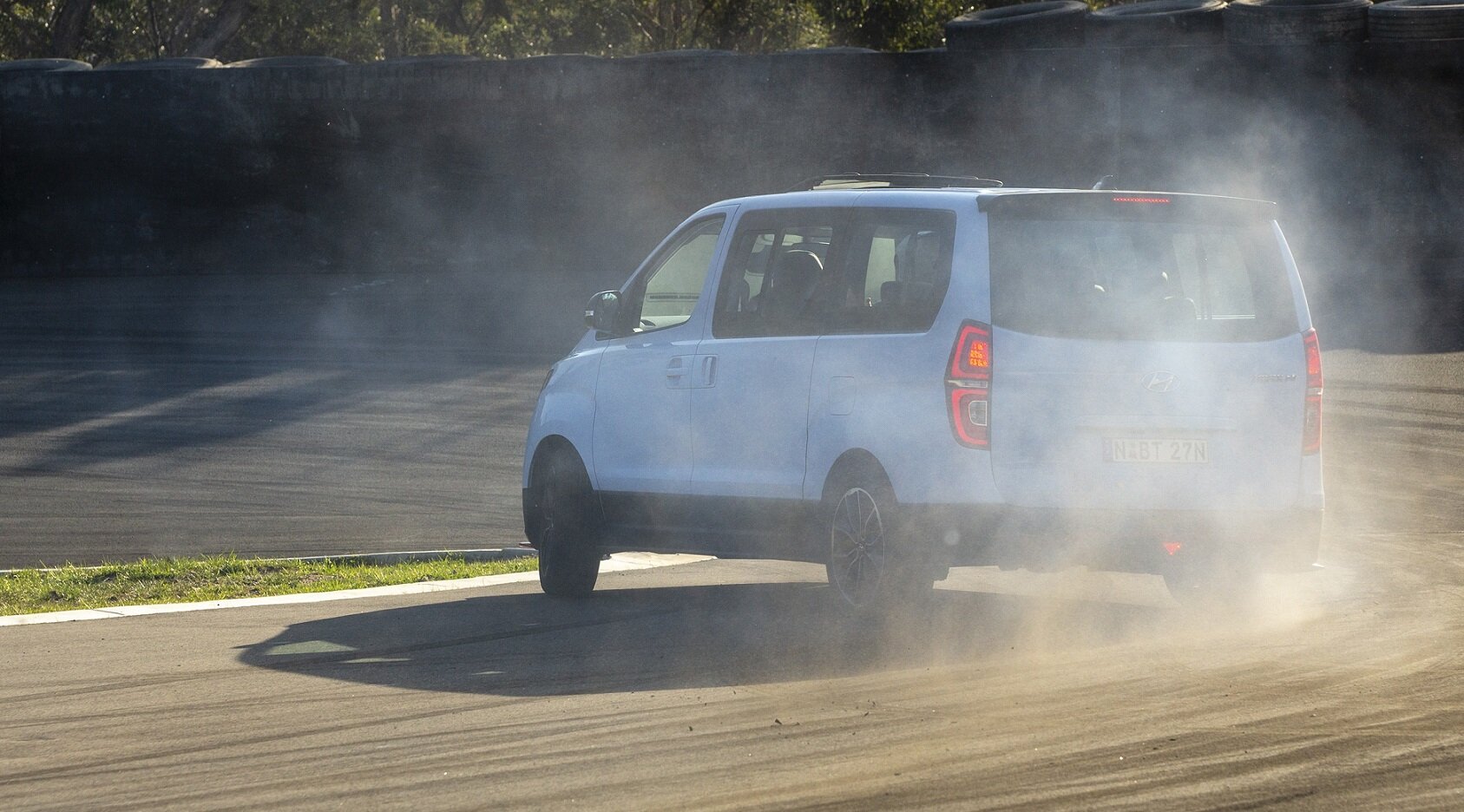Left-foot braking in a modern car: What you need to know
Left-foot braking: how not to do it, and what to do when it all goes totally ‘Skynet’ down there. I hate when that happens…
Here’s a question from you, if you are a man in a van.
I’m currently driving an Hyundai iMax diesel.
If you drive with two feet in slow traffic, ie: left foot resting on the brake and right foot on the accelerator, the car begins to accelerate and then it is as if the ignition switch is turned off. I found that if the left foot has released the brakes but is still on the pedal it causes a confused message to be sent to the ECU.
Hyundai says this problem does not exist but I believe that both Kia and Hyundai diesels have this problem. Obviously leaving the left foot off the brake pedal is the answer, but this vehicle is a community vehicle and at least six drivers in excess of 70 years of age drive it.
Maybe you or some of your contacts in the Hyundai service department have experienced this problem.
- Paul
We’re going to have a respectful disagreement here.
This, in fact, is not a problem. It’s an intentionally designed-in safety feature, and most modern cars have it.
It’s a piece of software that says, ‘if the throttle and the brake are both operated together, we’re going to shut down the throttle and prioritise braking’.
In fact, it’s very good to have this feature in your car.
Crisis management
Imagine you’re driving along and five years down the track some dodgy floor mat shifts forward unexpectedly and it wedges the accelerator flat down on the floor. It could be a drink bottle, or an adult toy, or your Louis Vuitton yachting moccasins - whatever, the point is, it gets stuck and jams the loud pedal down.
Or, hypothetically, you might have complete brain-fade during some critical driving incident, and you jam both pedals flat to the floor instead of just the brake (because high-level cognitive abilities are extremely degraded in a crisis).
Which is why you need advanced driver training if you want to swerve, avoid and (importantly) recover control in a driving crisis. Expecting to be Batman (or Lewis Hamilton) in this situation, without putting in the work, is nuts.
The point is: the throttle and the brake don’t go together. Because they do opposite things. And if you do call on them both contemporaneously, the car should identify that you are being something of a dick, and intervene.
In such a situation (I’m told) it does make sense to interlock the throttle against brake input. Most cars have throttle-by-wire, so it’s easy to kill the throttle via ECU intervention. It’s just a few lines of code.
Teaching your kids how to drive? Re-teaching yourself perhaps? Here’s my comprehensive advice on survival driving:
Safe Driving Part 1: Top 5 Rules >> and the all-important follow-through, Safe Driving Part 2: Skills vs Tactics >>
FREE BLIND-SPOT MONITORING UPGRADES: Any car, old or new, without spending a cent >>
As to this issue of drivers in excess of 70, I’ve got no problem with that - provided you can still drive safely.
And if you are over 70 - or any other age - don’t drive with both feet on both pedals at the same time. Because you’re driving like a dick if you do. How to: not drive like a dick >>
If you have developed this poor and annoying habit - un-develop it. Right now. I’ll wait…
Because if you don’t foreseeably need the brake pedal, put your damn left foot back on the floor, preferably on the footrest, so that your body may be effectively braced with your left leg. Which is how you’re supposed to drive. It’s also very effective for swerving and evasive maneuvers.
If you’re not doing that, you’re an idiot. An idiot. Plenty of idiots out there on the road; don’t be one. No need for more. We’re all stocked up.
Reflective surface
Just to recap: Left-foot braking with automatics is fine. It’s the preferred option, after all. Two feet; two pedals - the perfect division of responsibility.
The left foot’s job is: remain on the footrest as the default state. Then, when your ‘spider sense’ tingles and you determine that a braking intervention might soon be required, shift that foot to above the brake pedal. Get ready to stop.
If you need to brake, press as required. You just saved a second of so, by pre-emptively moving your foot. That’s three car lengths at conventional urban cruising speeds. No other mad Jedi driving technique can save this amount of stopping space.
If you ultimately don’t need to brake, go back to the footrest. It’s totally impractical and stupid to drive with your foot continually posed above the brake pedal. Plus it causes premature brake wear and rudely shines the brake lights at the driver behind you, even when you’re not braking - and that kinda makes you a dick.
If you cannot do this with those pesky feet, irrespective of your age, there’s only one thing you can do: get your licence and shred it, in the interest of public safety.
It’s quite okay to accelerate and brake exclusively right-footed as well - it’s just not as efficient, and certainly not as effective for performance driving, in an automatic.
Brakes are designed to kill the throttle, it’s a smart software interlock that saves lives, and it’s simply never a problem - unless you drive badly.


















xxxx